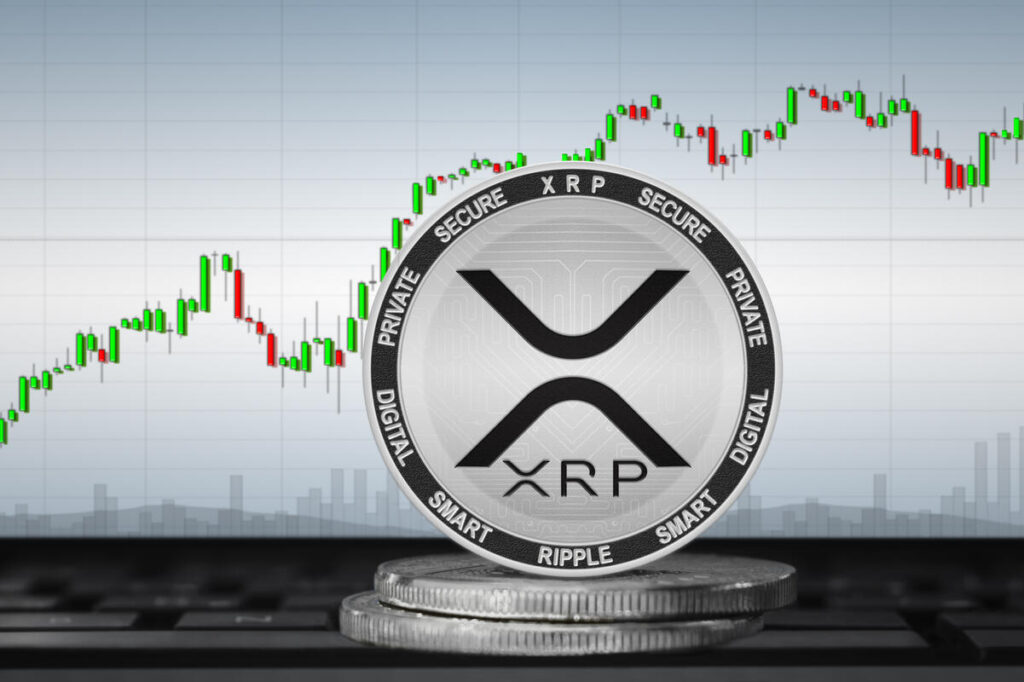Understanding XRP (Ripple): A Guide To Potential Long-Term Investments

Table of Contents
What is XRP and How Does it Work?
XRP is the native cryptocurrency of Ripple, a technology company focused on creating a global, real-time gross settlement system for financial transactions. Unlike cryptocurrencies like Bitcoin that rely on proof-of-work, XRP utilizes a unique consensus mechanism that allows for significantly faster and more cost-effective transactions. Its primary role within the Ripple network is to facilitate the exchange of different currencies across borders.
RippleNet, Ripple's flagship product, is a network of financial institutions using Ripple's technology to conduct cross-border payments. These payments are significantly faster and cheaper than traditional methods, utilizing XRP to bridge the gap between different currency systems. This allows for near instantaneous settlement of transactions, a crucial advantage in today's global economy.
- Faster transaction speeds than Bitcoin or Ethereum. XRP transactions typically settle in a few seconds, offering a considerable speed advantage over other major cryptocurrencies.
- Lower transaction fees. The cost of sending XRP is significantly lower compared to Bitcoin or Ethereum, making it a more cost-effective solution for high-volume transactions.
- Focus on institutional adoption and global payments. Ripple actively targets financial institutions, seeking to integrate its technology into existing banking systems and payment rails.
- Scalability advantages. XRP's consensus mechanism allows for a high throughput of transactions, making it scalable for large-scale adoption.
Ripple's Technology and Ecosystem
Ripple's technology utilizes a distributed ledger technology (DLT) similar to blockchain but with key differences that improve transaction speed and efficiency. Its core offering, RippleNet, comprises several solutions tailored to different needs:
- xRapid: Uses XRP for liquidity in cross-border payments, reducing reliance on correspondent banks and decreasing transaction times.
- xCurrent: A solution that allows banks to communicate directly and instantly, enabling faster and more efficient cross-border payments without necessarily using XRP.
- xVia: A solution that allows businesses to seamlessly access and send cross-border payments through RippleNet.
Ripple's strategic partnerships with numerous major financial institutions globally are a key driver of its potential. These partnerships highlight the growing acceptance of Ripple's technology within the traditional financial sector, potentially paving the way for greater XRP adoption. Ongoing developments and integrations with other platforms will continue to shape the Ripple ecosystem and its long-term prospects.
XRP Price History and Market Analysis
XRP's price has been highly volatile, mirroring the overall cryptocurrency market. It experienced a significant price surge in 2017-2018, followed by a substantial correction. The price is influenced by factors including regulatory updates, market sentiment, and the adoption rate of Ripple's technology by financial institutions. Analyzing historical price charts and identifying key price support and resistance levels can provide valuable insights for long-term investors.
- Historical price charts and key price points: Tracking XRP's price history helps understand its past performance and potential future trends.
- Impact of regulatory changes and legal battles on XRP price: Legal battles and regulatory scrutiny have significantly impacted XRP's price in the past.
- Market capitalization and circulating supply of XRP: Understanding XRP's market capitalization and circulating supply provides a broader perspective on its value.
- Comparison to other major cryptocurrencies in terms of price performance: Comparing XRP's price performance against other major cryptocurrencies helps to gauge its relative strength and potential.
Risks and Considerations Before Investing in XRP
Investing in XRP, like any cryptocurrency, carries significant risks:
- Volatility of the cryptocurrency market: The cryptocurrency market is notoriously volatile, and XRP's price can fluctuate dramatically in short periods.
- Regulatory uncertainty surrounding XRP and cryptocurrencies: The regulatory landscape for cryptocurrencies is constantly evolving, and uncertainty can significantly impact price.
- Potential for scams and fraudulent activities: The cryptocurrency space is prone to scams, and investors need to exercise caution to protect their investments.
- The need for diversification in investment portfolios: Diversification across different asset classes is crucial to mitigate overall investment risk. Over-reliance on a single cryptocurrency like XRP can be highly risky.
Specific risks to XRP include the ongoing legal battle with the SEC and the competitive landscape within the cross-border payments sector. Thorough research is essential before investing.
Long-Term Investment Potential of XRP
The long-term investment potential of XRP hinges on several key factors: increased institutional adoption, growth of the global payments market, and technological advancements within the Ripple ecosystem. The increasing use of Ripple's technology by financial institutions suggests a potential for broader XRP adoption and a corresponding increase in value. However, it is crucial to approach this with caution, acknowledging the considerable risks involved.
- Potential for increased institutional adoption: Further adoption by major banks and financial institutions could significantly drive up XRP's price.
- Growth of the global payments market and its impact on XRP: The increasing demand for faster and cheaper cross-border payments could benefit XRP.
- Technological advancements within the Ripple ecosystem: Future developments and upgrades to Ripple's technology could enhance its efficiency and appeal.
- Long-term price predictions (with clear disclaimers): It's impossible to predict future price movements with certainty; any predictions should be treated with extreme caution.
Conclusion:
XRP, the native cryptocurrency of Ripple, presents a complex investment opportunity. While its technology shows promise in revolutionizing cross-border payments and its adoption by major financial institutions is noteworthy, the inherent volatility of the cryptocurrency market and the ongoing legal challenges require careful consideration. Before investing in XRP or any other cryptocurrency, thorough research and understanding of the associated risks are paramount. Remember, this article is for informational purposes only and is not financial advice. Conduct your own research and consult with a financial advisor before making any investment decisions regarding XRP long-term investments. Understand the potential benefits and risks before considering XRP as a part of your investment portfolio.

Featured Posts
-
 Serious Office365 Security Flaw Exposed Millions In Losses Reported
May 07, 2025
Serious Office365 Security Flaw Exposed Millions In Losses Reported
May 07, 2025 -
 Simone Biles Wash U Commencement Speech 2025 Graduate Address
May 07, 2025
Simone Biles Wash U Commencement Speech 2025 Graduate Address
May 07, 2025 -
 Timberwolves Vs Lakers Anthony Edwards Playing Status
May 07, 2025
Timberwolves Vs Lakers Anthony Edwards Playing Status
May 07, 2025 -
 Daily Lotto Results Friday 18 April 2025
May 07, 2025
Daily Lotto Results Friday 18 April 2025
May 07, 2025 -
 Scream 7 Jenna Ortegas Beslissing En De Steun Voor Melissa Barrera
May 07, 2025
Scream 7 Jenna Ortegas Beslissing En De Steun Voor Melissa Barrera
May 07, 2025
